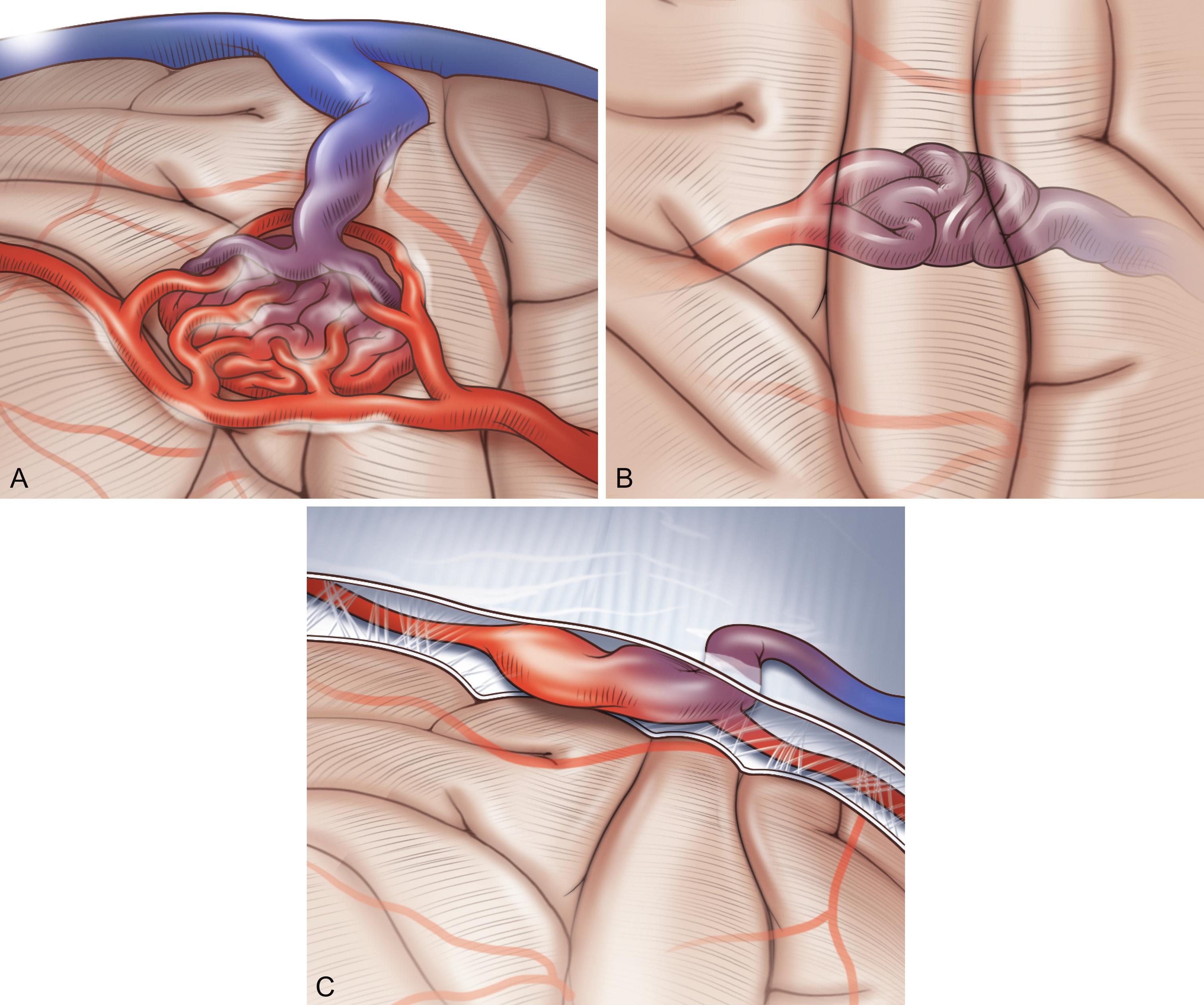Physical Address
304 North Cardinal St.
Dorchester Center, MA 02124
AVMs can be the result of one abnormal connection (fistular AVM) or multiple abnormal connections (racemose AVM).
Lack of a capillary bed in iAVMs results in abnormal anatomy in all vessels involved: arteries, nidus, and veins.
AVM formation is due to a combination of dysregulated vessel formation, vascular inflammation, and abnormal vessel remodeling after injury.
Risk factors for bleeding from an iAVM: previous hemorrhage, deep location, deep venous drainage, single draining vein, and draining vein stenosis.
Risk factors for symptoms: brainstem location, female sex, more than three arterial feeders, and venous varices.
Arteriovenous malformations (AVMs) are irregular, tangled vascular structures that form connections between arteries and veins without an intervening capillary bed. The etiology of these lesions is still unclear; however, there is strong evidence that genetic predisposition and dysregulated vascular inflammation are critical steps in AVM formation. Intracranial AVMs (iAVMs) are often clinically silent, complicating measures of prevalence, but most reports estimate up to 0.1% of the adult population harbors an iAVM. The primary concern in the management of iAVMs is intracerebral hemorrhage (ICH) secondary to rupture, though unruptured iAVMs can also cause headache, seizures, and focal neurological deficits. The incidence of symptomatic iAVMs is approximately 1 per 100,000 person-years, and the average age at initial presentation is between 30 and 40 years. ICH is the most common presenting symptom of iAVMs, and AVM rupture accounts for 2% of all strokes. Treatment options are resection (surgical removal), endovascular embolization, stereotactic radiosurgery, or a combination thereof. There is no single optimal treatment strategy, especially for unruptured iAVMs, nor are there any clearly efficacious pharmacologic interventions. A clear understanding of the underlying pathology is necessary to optimize treatments and improve outcomes for iAVM patients.
Intracranial AVMs are primarily classified based on size, morphology, and location of the nidus (the central area of tangled vessels in which the arteriovenous shunting occurs). The Spetzler-Martin scale is a widely used classification system for stratifying surgical risk of iAVM resection. This scale uses three features: size (< 3, 3–6, or > 6 cm), location (eloquent vs noneloquent), and venous drainage (superficial vs deep). Arteriovenous fistulae are distinguished from AVMs by the presence of a single, high-flow anastomosis rather than a nidus (see Fig. 2.1 ). Further, AVMs, although usually static, can grow or regress but are not neoplastic lesions and thus are distinct from hemangiomas.

Become a Clinical Tree membership for Full access and enjoy Unlimited articles
If you are a member. Log in here